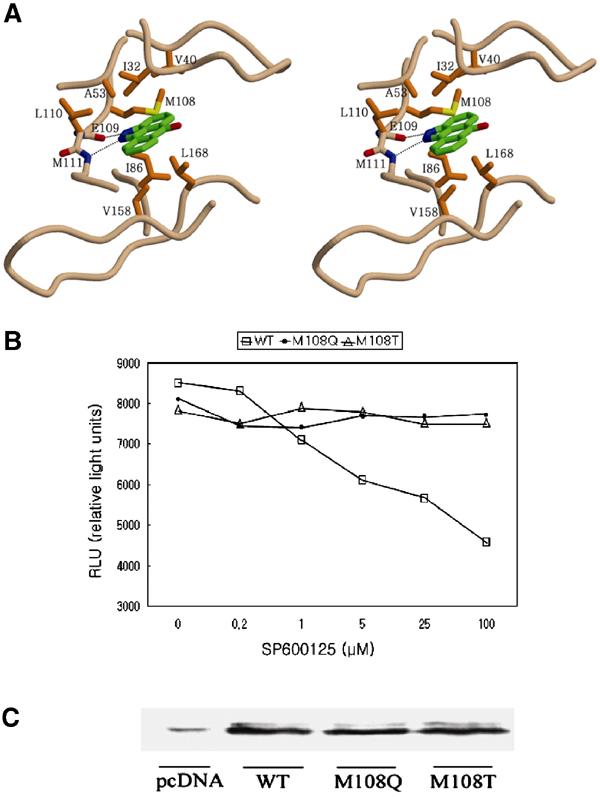Figure 7.

The importance of the hydrophobic residues of JNK1 for binding of SP600125. (A) Stereoview of the binding mode of SP600125 in the JNK1–pepJIP1 complex. The residues important for inhibitor binding are represented and labeled. The side chains of E109 and M111 are omitted for clarity. (B) Cell-based assay of the JNK1 wild type and mutants using SP600125 as an inhibitor. The kinase activity was measured in HeLa cells using the PathDetect® c-jun trans-reporting systems (Stratagene). RLU is proportional to the kinase activity. (C) The physical amounts of the JNK1 wild type and mutants used in cell-based assay were measured by Western blot analysis. The weak band labeled as pcDNA means the amount of JNK1 isoforms existing in HeLa cells when the pcDNA3.1A expression vector only was transfected, where the cDNA of JNK1 was not inserted.
